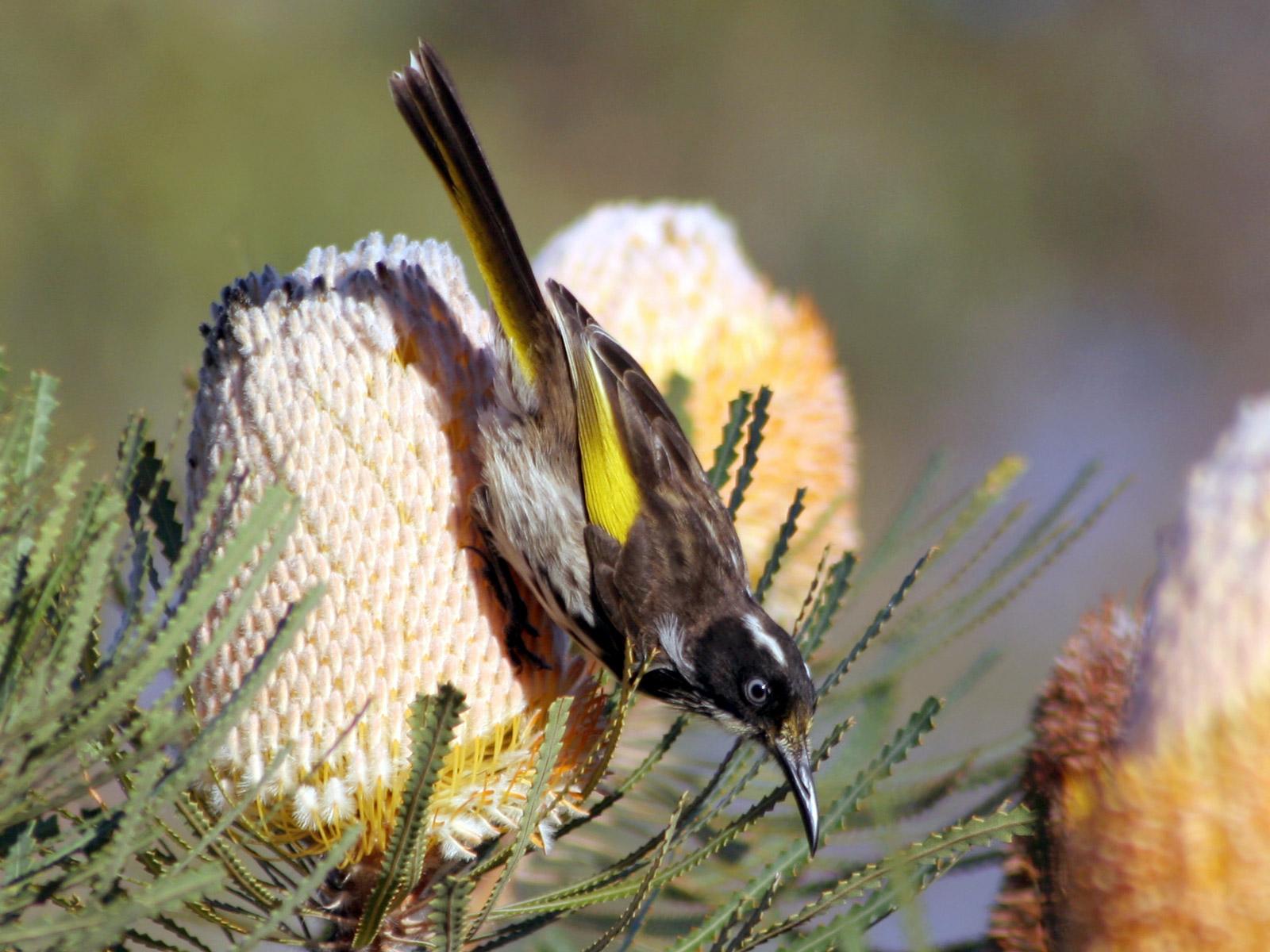How did sugar-eating birds co-evolve with plants that produce nectar?

New Holland Honeyeater (Phylidonyris novaehollandiae) feeding on nectar of Acorn Banksia (Banksia prionotes) by Todd J. McWhorter.
Research led by the University of Adelaide has shown, for the first time, that the digestive systems of nectar-eating birds co-evolved with the nectar-composition in flowers.
Scientists have long suspected the digestive systems of nectar-eating birds, such as honeyeaters, co-evolved with the nectar-composition in flowers.
To document whether this theory is accurate, in a paper published in iScience, researchers at the University of Adelaide studied the ability of birds to digest different sugars, and looked at whether they matched the nectar sugars found in plants used by families of birds in different parts of the world.
“The plants specialised for pollination by nectar-feeding birds produce the sugars that those birds can use very efficiently, and the birds’ digestive ability has evolved to match.”Dr Todd McWhorter
The study involved 50 different bird species, including 20 nectarivores (mainly consume nectar and pollen), such as hummingbirds, sunbirds, honeyeaters, flower-piercers, and lorikeets.
“We’ve been collecting data on the abilities of these birds to digest a nectar diet for many years and on multiple continents – honeyeaters in Australia, sunbirds in Africa, hummingbirds in North America,” said lead author Dr Todd McWhorter, Senior Lecturer in the University of Adelaide’s School of Veterinary Sciences.
The researchers found that the digestive abilities of birds match the sugars found in the plant nectars that they use. Birds that only occasionally feed on nectar are not as good at digesting sucrose, and the plants they usually feed on tend to have mostly the sugars glucose and fructose in their nectar, which are simpler to digest.
“This pattern occurs across the world in groups of birds and plants unrelated to each other – so it’s an exciting example of characteristics co-evolving independently but arriving at the same point,” said Dr McWhorter.
“The plants specialised for pollination by nectar-feeding birds produce the sugars that those birds can use very efficiently, and the birds’ digestive ability has evolved to match.”
From an ecosystem perspective this knowledge can act as a powerful tool to help maintain biodiversity, with birds serving as pollinators for the plants they use. The new knowledge also provides information for bird lovers on what flowers they should plant in their gardens to attract a greater diversity of birds.
“It’s very common in America for people to put out hummingbird feeders to attract these high-energy wonders,” said Dr McWhorter.
“Feeding birds (especially nectar-specialists) is less common here in Australia, but many people plant certain types of plants in their gardens specifically to attract honeyeaters. The banksia is a great example.
“The story in Australia is actually really interesting – we have many types of plants used by a very large variety of nectar-specialist honeyeaters, parrots and even one type of sunbird found in far north Queensland.
“Many native Australian plant species sold at garden centres would have nectars that the specialised nectar-feeding birds can use.”
